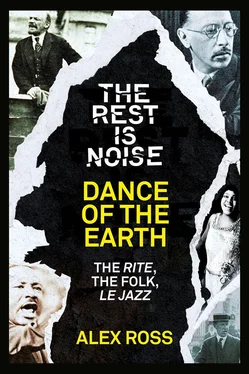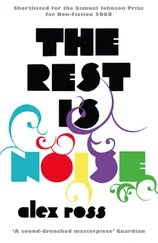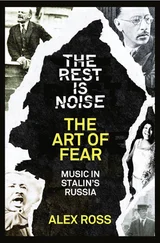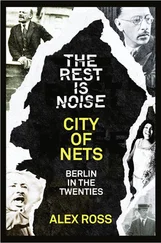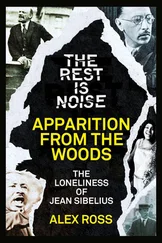This is a chapter from Alex Ross's groundbreaking history of 20th century classical music, The Rest is Noise .
It is released as a special stand-alone ebook to celebrate a year-long festival at the Southbank Centre, inspired by the book. The festival consists of a series of themed concerts. Read this chapter if you're attending concerts in the episode Paris: shock, glamour and experiments.
Alex Ross, music critic for the New Yorker , is the recipient of numerous awards for his work, including an Arts and Letters Award from the American Academy of Arts and Letters, the Belmont Prize in Germany and a MacArthur Fellowship. The Rest is Noise was his first book and garnered huge critical acclaim and a number of awards, including the Guardian First Book Award and the National Book Critics Circle Award. He is also the author of Listen to This.
DANCE OF THE EARTH
The Rite , the Folk, le Jazz
From The Rest Is Noise by Alex Ross
Contents
Dance of the Earth
Notes
Suggested Listening and Reading
Copyright
About the Publisher
3 DANCE OF THE EARTH
The Rite , the Folk, le Jazz
May 29, 1913, was an unusually hot day for Paris in the spring: the temperature reached eighty-five degrees. By late afternoon a crowd had gathered in front of the Théâtre des Champs-Élysées, on the avenue Montaigne, where Serge Diaghilev’s Ballets Russes was holding its spring gala. “There, for the expert eye, were all the makings of a scandal,” recalled Jean Cocteau, then twenty-three. “A fashionable audience in décolletage, outfitted in pearls, egret headdresses, plumes of ostrich; and, side by side with the tails and feathers, the jackets, head-bands, and showy rags of that race of aesthetes who randomly acclaim the new in order to express their hatred of the loges ... a thousand nuances of snobbery, super-snobbery, counter-snobbery ...” The better-heeled part of the crowd had grown wary of Diaghilev’s methods. Disquieting rumors were circulating about the new musical work on the program—The Rite of Spring, by the young Russian composer Igor Stravinsky—and also about the matching choreography by Nijinsky. The theater, then brand-new, caused a scandal of its own. With its steel-concrete exterior and amphitheater-like seating plan, it was deemed too severe, too Germanic. One commentator compared it to a zeppelin moored in the middle of the street.
Diaghilev, in a press release, promised “a new thrill that will doubtless inspire heated discussion.” He did not lie. The program began innocuously, with a revival of the Ballets Russes’ Chopin fantasy Les Sylphides. After a pause, the theater darkened again, and high, falsetto-like bassoon notes floated out of the orchestra. Strands of melody intertwined like vegetation bursting out of the earth—“a sacred terror in the noonday sun,” Stravinsky called it, in a description that had been published that morning. The audience listened to the opening section of the Rite in relative silence, although the increasing density and dissonance of the music caused mutterings, titters, whistles, and shouts. Then, at the beginning of the second section, a dance for adolescents titled “The Augurs of Spring,” a quadruple shock arrived, in the form of harmony, rhythm, image, and movement. At the outset of the section, the strings and horns play a crunching discord, consisting of an F-flat-major triad and an E-flat dominant seventh superimposed. They are one semitone apart (F-flat being the same as E-natural), and they clash at every node. A steady pulse propels the chord, but accents land every which way, on and off the beat:
one two three four five six seven eight
one two three four five six seven eight
one two three four five six seven eight
one two three four five six seven eight
Even Diaghilev quivered a little when he first heard the music. “Will it last a very long time this way?” he asked. Stravinsky replied, “Till the end, my dear.” The chord repeats some two hundred times. Meanwhile, Nijinsky’s choreography discarded classical gestures in favor of near-anarchy. As the ballet historian Lynn Garafola recounts, “The dancers trembled, shook, shivered, stamped; jumped crudely and ferociously, circled the stage in wild khorovods.” Behind the dancers were pagan landscapes painted by Nicholas Roerich—hills and trees of weirdly bright color, shapes from a dream.
Howls of discontent went up from the boxes, where the wealthiest onlookers sat. Immediately, the aesthetes in the balconies and the standing room howled back. There were overtones of class warfare in the proceedings. The combative composer Florent Schmitt was heard to yell either “Shut up, bitches of the seizième!” or “Down with the whores of the seizième!”—a provocation of the grandes dames of the sixteenth arrondissement. The literary hostess Jeanne Mühlfeld, not to be outmaneuvered, exploded into contemptuous laughter. Little more of the score was heard after that. “One literally could not, throughout the whole performance, hear the sound of music,” Gertrude Stein recalled, no doubt overstating for effect. “Our attention was constantly distracted by a man in the box next to us flourishing his cane, and finally in a violent altercation with an enthusiast in the box next to him, his cane came down and smashed the opera hat the other had just put on in defiance. It was all incredibly fierce.”
The scene superficially resembled Schoenberg’s “scandal concert,” which shook up Vienna in March of the same year. But the bedlam on the avenue Montaigne was a typical Parisian affair, of a kind that took place once or twice a year; Nijinsky’s orgasmic Prelude to “The Afternoon of a Faun” had caused similar trouble the previous season. Soon enough, Parisian listeners realized that the language of the Rite was not so unfamiliar; it teemed with plainspoken folk-song melodies, common chords in sparring layers, syncopations of irresistible potency. In a matter of days, confusion turned into pleasure, boos into bravos. Even at the first performance, Stravinsky, Nijinsky, and the dancers had to bow four or five times for the benefit of the applauding faction. Subsequent performances were packed, and at each one the opposition dwindled. At the second, there was noise only during the latter part of the ballet; at the third, “vigorous applause” and little protest. At a concert performance of the Rite one year later, “unprecedented exaltation” and a “fever of adoration” swept over the crowd, and admirers mobbed Stravinsky in the street afterward, in a riot of delight.
The Rite, whose first part ends with a stampede for full orchestra titled “Dance of the Earth,” prophesied a new type of popular art— lowdown yet sophisticated, smartly savage, style and muscle intertwined.
It epitomized the “second avant-garde” in classical composition, the post-Debussy strain that sought to drag the art out of Faustian “novel spheres” and into the physical world. For much of the nineteenth century, music had been a theater of the mind; now composers would create a music of the body. Melodies would follow the patterns of speech; rhythms would match the energy of dance; musical forms would be more concise and clear; sonorities would have the hardness of life as it is really lived.
A phalanx of European composers—Stravinsky in Russia, Béla Bartók in Hungary, Leoš Janáček in what would become the Czech Republic, Maurice Ravel in France, and Manuel de Falla in Spain, to name some of the principals—devoted themselves to folk song and other musical remnants of a pre-urban life, trying to cast off the refinements of the city dweller. “Our slender bodies cannot hide in clothing,” goes the text of Bartók’s Cantata profana, a fable of savage boys who turn into stags. “We must drink our fill not from your silver goblets but from cool mountain springs.”
Читать дальше
